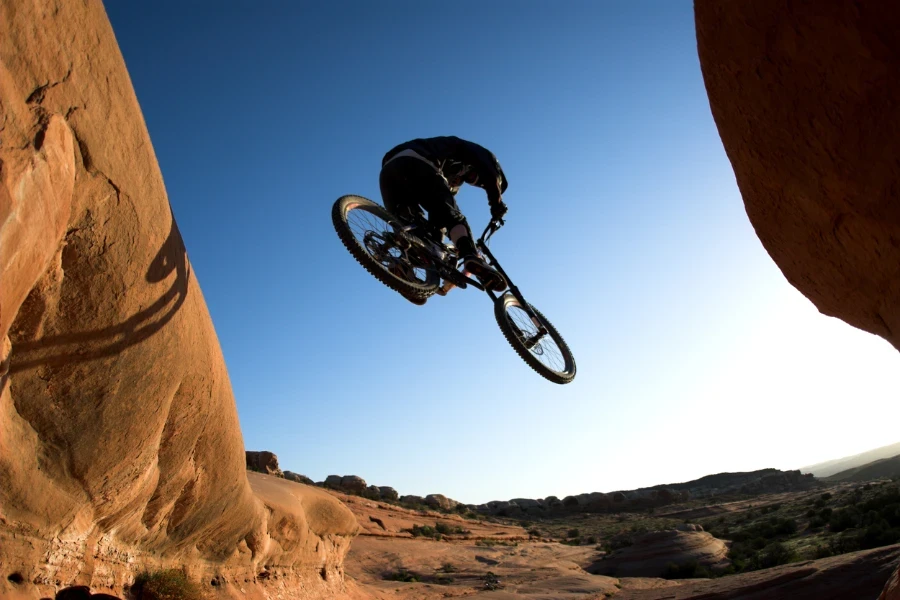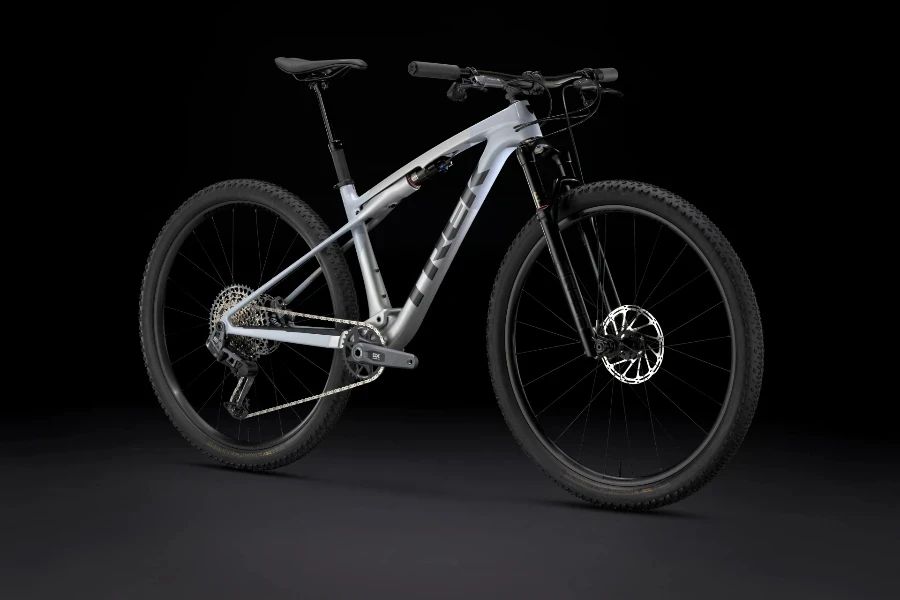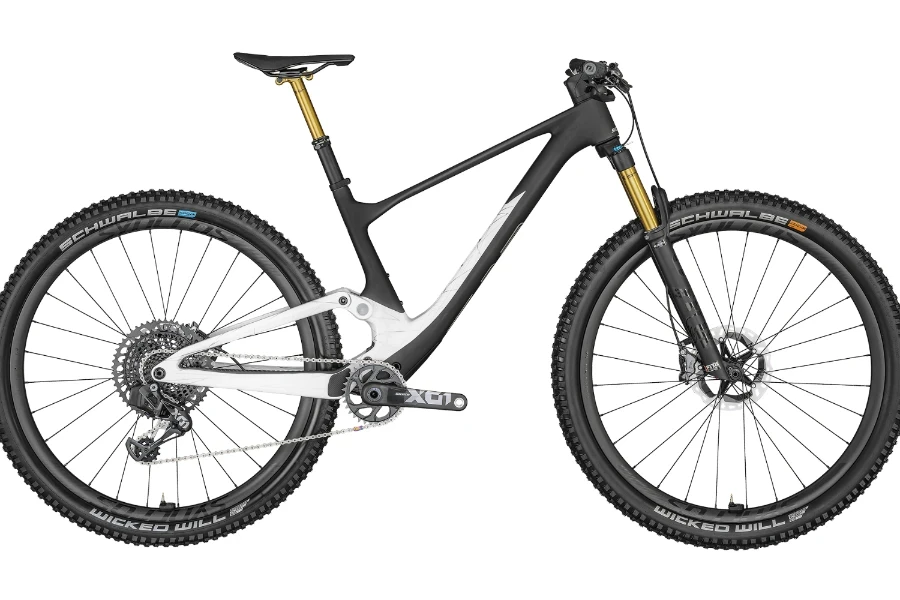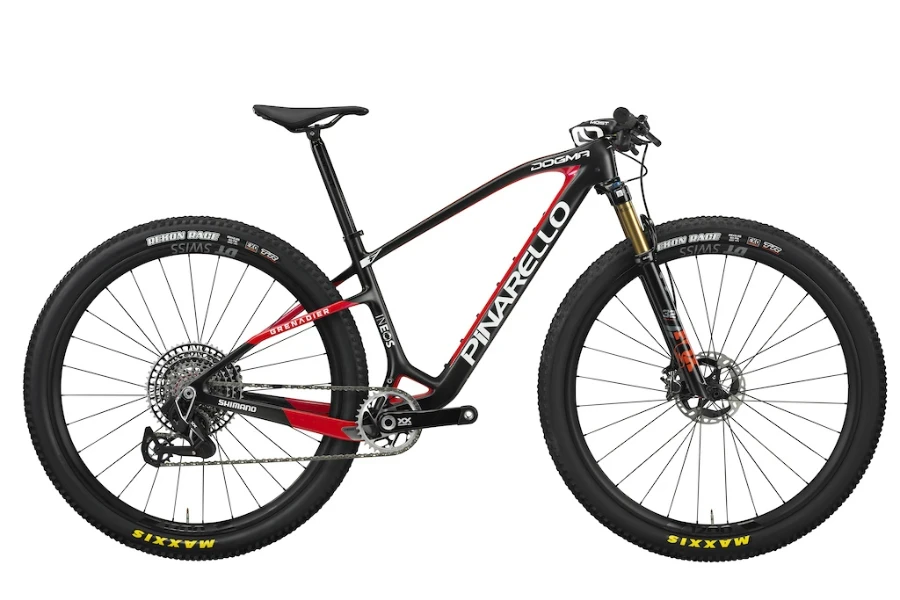As the mountain biking industry gears up for 2024, retailers are poised at the starting line, ready to race ahead with a selection of bikes that promise to transform the riding experience. In a world where efficiency and adventure converge, these two-wheeled marvels are not just products on a shelf; they are tickets to uncharted trails and exhilarating journeys. For the savvy retailer, choosing the right bikes is about offering a gateway to the great outdoors, where every pedal stroke spells profit and every dirt path leads to a loyal customer base.
Table of Contents:
1. Pedaling through the market: 2024 insights
2. The trail to success: Key selection criteria
3. Leading the pack: 2024’s top mountain bikes
1. Pedaling through the market: 2024 insights

In 2023, the mountain bike market is riding an upward trail, with the global bicycle market size valued at a staggering USD 64,625.7 million. This robust sector is expected to maintain a steady cadence, expanding at a compound annual growth rate (CAGR) of 9.7% from 2023 to 2030. Such growth is propelled by a diverse range of cyclists, from those seeking leisure to those prioritizing fitness and eco-friendly transportation. The mountain bike segment, in particular, is poised for significant growth as millennials and younger generations pedal towards mountain biking for adventure and leisure.
The rise of the mountain biking economy
As we navigate the contours of the 2024 mountain biking market, it’s evident that this sector is climbing to new heights. The mountain biking economy is flourishing, with industry analysts forecasting a robust growth trajectory. This surge is fueled by an expanding demographic of enthusiasts seeking both high-performance machinery and sustainable outdoor experiences. Retailers must note that the market is no longer just a niche for extreme sports aficionados but a broad church, encompassing eco-conscious commuters and adventure-seeking families alike.
Analyzing consumer trends: What riders want

Delving deeper, consumer trends reveal a clear demand for versatility and personalization. Riders are looking for bikes that can seamlessly transition from cityscapes to backcountry trails. According to industry insights, there’s a growing preference for models that offer a blend of comfort, durability, and tech integration, catering to both the weekend warrior and the daily commuter. Retailers should align their offerings with these preferences to capture the market effectively.
The impact of technology and innovation on bike manufacturing
On the manufacturing front, technology, and innovation are the linchpins of the 2024 mountain bike lineup. Advancements in materials science have led to lighter, stronger frames, while integrated tech is offering riders unprecedented levels of customization and tracking capabilities. Innovations such as adaptive suspension systems and electric-assist motors are setting new standards in rider experience. Retailers equipped with the latest tech-infused inventory are set to lead the pack, providing products that not only meet but anticipate consumer needs.
2. The trail to success: Key selection criteria
In the ever-evolving world of mountain biking, the year 2024 has brought a fresh set of criteria for retailers to consider when selecting the best products for their customers. As the industry leans into a new era of innovation and consumer expectation, understanding the nuanced needs of riders is paramount.
Matching bikes to riders: Understanding customer needs
The modern mountain biker’s profile is as varied as the trails they ride. Retailers must recognize the unique demands of each rider, whether they’re adrenaline-charged downhillers or endurance-focused cross-country enthusiasts. The latest cross-country bikes, like the Pinarello Dogma XC and Trek Supercaliber, are designed to cater to the rigors of modern racing, balancing low weight with capability. This insight is crucial for retailers aiming to match bikes to riders effectively.

Suspension and handling: Navigating the technical terrain
Suspension technology has seen significant advancements, with bikes like the Trek Supercaliber offering increased rear-wheel travel and a more capable front fork to handle technical terrain. Retailers should note the trend towards bikes that provide both agility and stability, ensuring a confident ride across challenging landscapes.
Material matters: Frame composition and durability
Frame technology is a critical selection criterion, with brands like Ibis and Scott leading the charge in innovative frame design. The Ibis Exie, for instance, showcases geometry figures that align with downcountry or trail bikes, indicating a shift towards versatility without compromising on race-day performance.
Gear and accessories: Enhancing the riding experience
The right gear and accessories can significantly enhance the mountain biking experience. Retailers must stay abreast of the latest trends, such as integrated handlebars and internal cable routing seen in the Pinarello Dogma XC, to offer products that meet the evolving demands of riders.
Price vs. performance: Finding the sweet spot for value
Finally, price versus performance remains a delicate balance. With high-end models like the Scott Spark commanding premium prices, retailers must navigate the market to find the sweet spot where value meets the performance needs of their customers. Offering a range that includes both high-end and more affordable options, like the Vietnam-made Ibis Exie, ensures a broader appeal to a diverse customer base.

In conclusion, the mountain bike market in 2024 demands a keen eye for detail and a deep understanding of the rider’s needs. Retailers equipped with this knowledge will be best positioned to select products that not only satisfy but also inspire their customers to push their limits on the trails.
3. Leading the pack: 2024’s top mountain bikes
In the competitive arena of mountain bikes, 2024 has unveiled models that not only promise to elevate the riding experience but also offer a glimpse into the future of biking technology.
The versatility victor: Pinarello Dogma XC
Pinarello’s Dogma XC emerges as a frontrunner, boasting a triumphant return to mountain biking with a design that marries stiffness with a distinctive aesthetic. This model has already clinched multiple elite gold medals, signaling its prowess in the cross-country racing domain. Its full-suspension and hardtail versions cater to various terrains, ensuring a balanced energy transfer that could redefine performance standards.

The beginner’s best friend: Ibis Exie
For newcomers to the sport, the Ibis Exie stands out as an approachable yet formidable contender. It’s a bike that shreds with ease, thanks to its own country-inspired geometry and a focus on fun. The Exie’s progressive design and compatibility with longer dropper posts make it an enticing option for those starting their mountain biking journey.
The price performer: Trek Supercaliber
Value meets performance in the Trek Supercaliber. Lighter than its predecessors and equipped with increased rear-wheel travel, it’s designed to handle technical terrains with agility. The integration of the IsoStrut rear suspension and a Rockshox SIDLuxe shock underscores its commitment to delivering a high-quality ride at a competitive price point.
The trailblazers: Innovations in electric and enduro bikes
2024 also sees the rise of electric and enduro bikes, with advancements that push the boundaries of what’s possible on two wheels. These trailblazers are setting new standards in power assistance and downhill capability, offering riders unprecedented levels of support and performance.
The future on two wheels: Upcoming models to watch
The horizon is bright with upcoming models that promise to further innovate the mountain biking experience. With a keen eye on emerging trends and rider feedback, the industry is poised to introduce bikes that will continue to revolutionize the market.

Conclusion
As we look ahead, it’s clear that the mountain biking industry is on an upward trajectory, with 2024’s offerings showcasing a blend of innovation, performance, and value. For retailers, staying abreast of these developments is crucial in curating a selection that meets the evolving demands of riders and maintains a competitive edge in a dynamic market. The journey forward is as thrilling as the trails these bikes are built to conquer.




